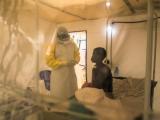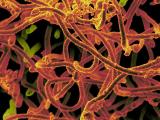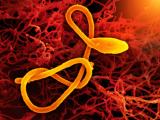May 10, 2005 (CIDRAP News) Angola has had 2 days in the past week with no new cases of Marburg hemorrhagic fever, suggesting that the country is getting closer to controlling the epidemic, Agence-France Presse (AFP) reported today.
Angolan Health Minister Sebastiao Veloso put the Marburg death toll at 284, the report said. That compares with 280 deaths out of a total of 313 cases reported by AFP a week ago. Today's story didn't list the case total.
"Everything indicates we are on the road towards controlling the epidemic. We are no longer in the same situation which we were in just three weeks ago," Veloso was quoted as saying. He made the comments on Lisbon-based Radio Renascenca.
Veloso said the epidemic would be declared under control after the passage of 21 daysconsidered the disease's incubation periodwith no new cases. But the World Health Organization (WHO) does not deem an epidemic contained until double the incubation period has passed, the story said.
An AFP report on May 3 had cited more than 30 new cases in the preceding few days. That report came just 4 days after the WHO had warned that infection control lapses in the main hospital in Uige province, the epicenter of the outbreak, could prolong the epidemic.
In a May 6 statement, the WHO suggested that the surging case count reported at the beginning of this month was misleading. The agency said, "The large increase in the number of reported cases for Uige is the result of retrospective investigation and entry into the database of cases that occurred previously. However, new confirmed cases and deaths continue to be reported in Uige."
The statement said Angolan health officials, WHO, and Medicins Sans Frontieres had agreed on procedures and responsibilities for infection control at Uige's provincial hospital. Teams were focusing particularly on screening and admission procedures to keep possible Marburg patients from being treated on open wards.
Angola's Marburg outbreak is the largest on record, exceeding one that plagued the Democratic Republic of the Congo from 1998 to 2000. The deadly virus spreads through contact with bodily fluids.
See also:
May 6 WHO statement
http://www.who.int/csr/don/2005_05_06/en/index.html
Centers for Disease Control and Prevention chart of Marburg outbreaks
http://www.cdc.gov/ncidod/dvrd/spb/mnpages/dispages/marburg/marburgtable.htm




















